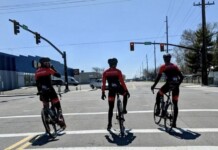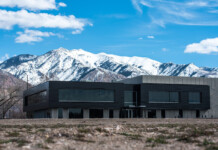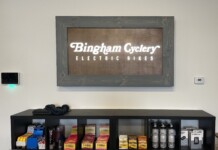Quality Bicycle Products (QBP), a major U.S. distributor of bike parts began shipping from its new distribution center in Ogden, Utah in mid January. The 85,000 square-foot facility, which is now running at full capacity, houses more than 14,000 SKUs, almost double the volume of the companyʼs temporary warehouse in neighboring Clearfield. Dealers in the western region will benefit from fewer split orders, lower freight costs and delivery times averaging two days or less.
“This is a significant customer service enhancement for an operation that is already serving western dealers successfully,” said Kim Brown, QBP director of distribution. Located close to major highway and rail shipping routes, the Utah distribution center provides rapid, ground-based shipping to customers in an 11-state western region. By greatly reducing the need for airfreight, the facility shrinks QBPʼs environmental footprint, observed QBP President Steve Flagg. “Orders shipped by air emit nine times more CO2 than ground orders and airfreight rates tend to rise exponentially faster than ground freight as fuel prices rise,” he commented.
“The Utah team has created an entirely new part of QBP from the ground up—and theyʼve done it in keeping with our focus on customers and service,” said Flagg. “We launched the Clearfield warehouse in March of last year with less than 8,000 SKUs. Since then, they have shipped an average 23 percent of QBPʼs total sales each week, delivering over 80,000 boxes since June.”
The distribution center represents state of the art sustainable design, and is expected to achieve the LEED Gold designation awarded by the Green Building Certification Institute. Features include advanced wastewater technologies, high-efficiency appliances and a design that capitalizes on natural light. Additionally, a 39.5-kilowatt solar panel array provides a portion of the buildingʼs energy and a 170-well geothermal system provides heat and cooling in all seasons. Designed to work harmoniously with the natural environment, the grounds have a graded parking lot that channels storm runoff into a retention pond; rock gardens that promote evaporation and natural breakdown of chemical pollutants; drought-resistant native plants that donʼt need irrigation or maintenance; and an all-concrete parking lot that minimizes heat island effect. Beyond the environmental benefits, the structure will cost significantly less to operate than a conventional building, providing an estimated payback of twelve years.










